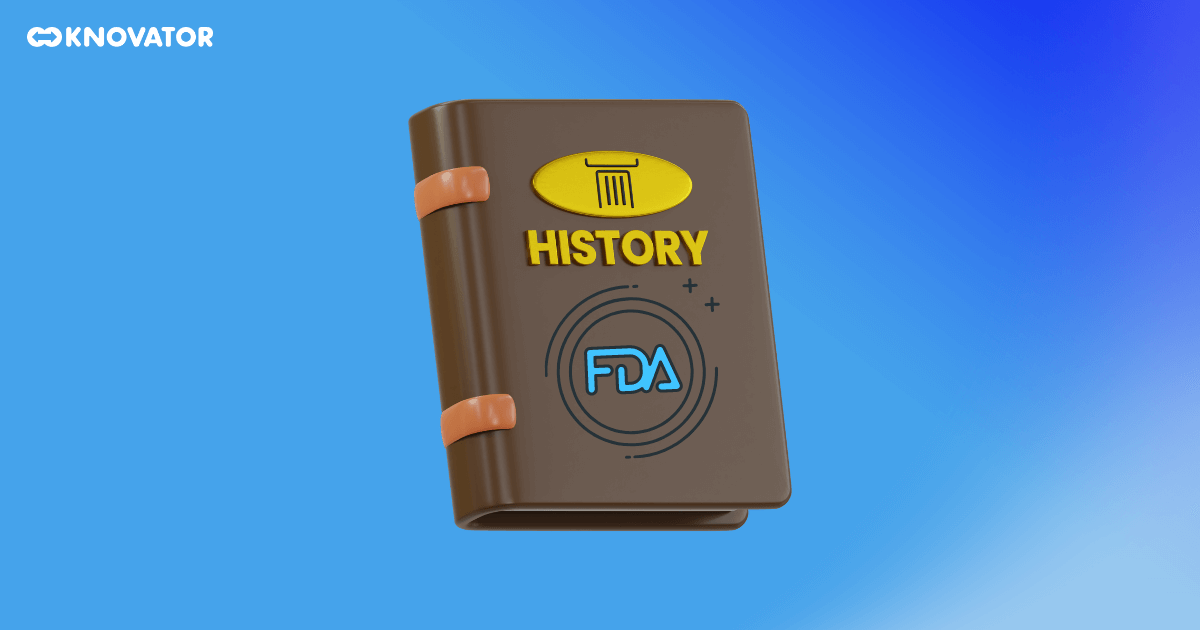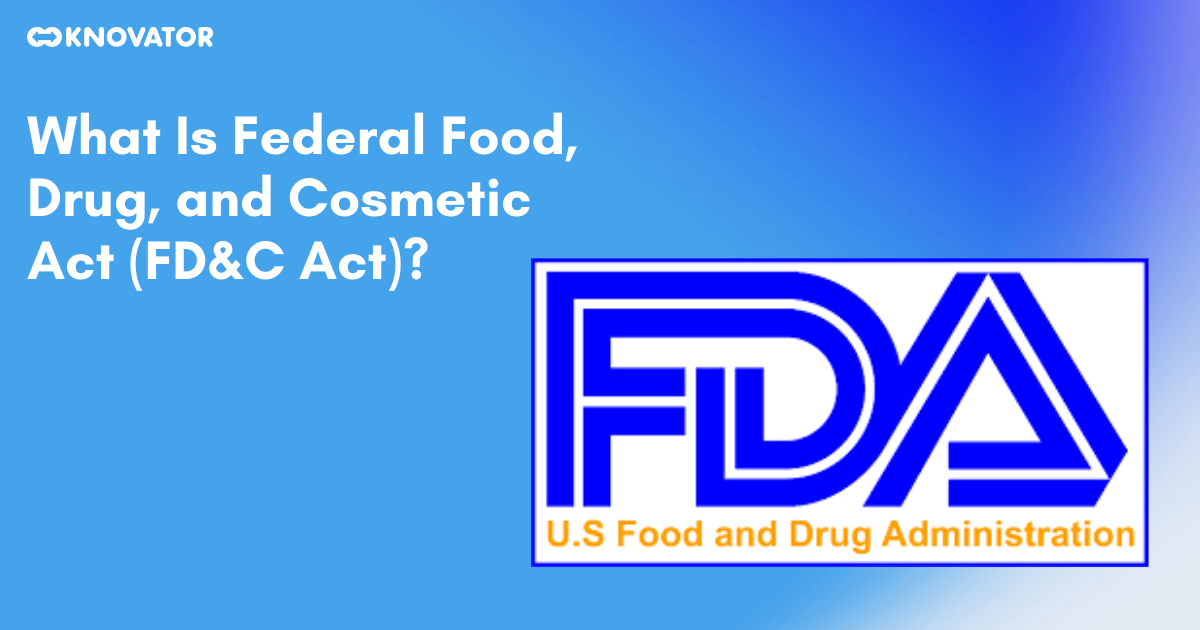Welcome! Today, we’re diving into the Federal Food, Drug, and Cosmetic Act, or FD&C Act. This critical legislation has shaped how we regulate food, drugs, and cosmetics in the United States.
The FD&C Act was enforced in 1938, and its main purpose is to protect consumers. It does this by setting standards for the safety, efficacy, and truthful labeling of food, drugs, and cosmetics. It’s enforced by the Food and Drug Administration (FDA), which oversees compliance and takes action against businesses that violate the Act.
The FD&C Act is a complex legislation with many different provisions and amendments. But don’t worry – we’re here to break it down for you. In this blog, we’ll explore the history of the FD&C Act, its key provisions, and its impact on public health and industry practices. We’ll also look at some notable cases of FD&C Act enforcement and speculate on the future implications of the Act. So, let’s get started!
History of the FD&C Act
 The FD&C Act has a rich history that dates back to the early 20th century. Its creation was triggered by a series of public health disasters, the most notable being the Elixir Sulfanilamide disaster of 1937. This tragedy involved a toxic drug that claimed the lives of over 100 people, many of whom were children. The public outcry that followed led to a demand for stronger regulations to protect consumers.
The FD&C Act has a rich history that dates back to the early 20th century. Its creation was triggered by a series of public health disasters, the most notable being the Elixir Sulfanilamide disaster of 1937. This tragedy involved a toxic drug that claimed the lives of over 100 people, many of whom were children. The public outcry that followed led to a demand for stronger regulations to protect consumers.
In response, Congress passed the FD&C Act in 1938. This Act significantly expanded the powers of the FDA and introduced new regulations for the safety and labeling of food, drugs, and cosmetics. It was a landmark moment in the history of consumer protection in the United States.
Over the years, the FD&C Act has been amended several times to address emerging issues and challenges. These amendments have further strengthened the Act and expanded its scope. For example, the Kefauver Harris Amendment of 1962 introduced requirements for drug manufacturers to prove the effectiveness of their products, not just their safety.
Today, the FD&C Act remains a cornerstone of consumer protection in the United States. It is continuing to evolve to meet the requirements of a changing society and address new challenges in regulating food, drugs, and cosmetics.
Key Provisions of the FD&C Act
 The FD&C Act is a comprehensive piece of legislation with many key provisions. These provisions cover a wide range of areas, from the safety and labeling of products to the enforcement powers of the FDA.
The FD&C Act is a comprehensive piece of legislation with many key provisions. These provisions cover a wide range of areas, from the safety and labeling of products to the enforcement powers of the FDA.
One of the FD&C Act’s most important provisions is the safety testing requirement. Before a new drug can be sold, the manufacturer must prove it is safe for its intended use. This involves conducting rigorous testing and submitting the results to the FDA for review.
The FD&C Act also sets standards for labeling food, drugs, and cosmetics. These standards ensure that consumers have the information they need to make informed decisions. For example, food labels must include information about the product’s ingredients and nutritional content.
Another key provision of the FD&C Act is the prohibition of adulterated and misbranded products. This includes products that are contaminated, falsely labeled, or otherwise deceptive.
The FD&C Act also gives the FDA the power to enforce these regulations. This includes the authority to inspect manufacturing facilities, seize illegal products, and take legal action against violators.
These are just a few of the key provisions of the FD&C Act. In the following sections, we’ll delve deeper into these and other aspects of the Act, including its amendments, impact, and enforcement.
Amendments to the FD&C Act
 Over the years, the FD&C Act has been amended numerous times to address emerging issues and strengthen consumer protections. Let’s take a look at some of the most significant amendments.
Over the years, the FD&C Act has been amended numerous times to address emerging issues and strengthen consumer protections. Let’s take a look at some of the most significant amendments.
The Kefauver Harris Amendment of 1962 was a game-changer. It required drug manufacturers to prove not only the safety but also the effectiveness of their products. This was in response to the thalidomide tragedy in Europe, where a drug caused severe birth defects.
The Orphan Drug Act of 1983 is another notable amendment. It provided incentives for developing drugs for rare diseases, or “orphan” diseases, that affect less than 200,000 people in the U.S.
The Dietary Supplement Health and Education Act of 1994 distinguished dietary supplements from drugs and foods and set different standards for their regulation.
These amendments, among others, have shaped the FD&C Act into the comprehensive piece of legislation it is today. They reflect the evolving nature of the healthcare industry and the ongoing commitment to protecting public health.
Impact of the FD&C Act
 The FD&C Act has profoundly impacted public health, industry practices, and consumer protection. It has set the bar for safety and efficacy in the food, drug, and cosmetic industries.
The FD&C Act has profoundly impacted public health, industry practices, and consumer protection. It has set the bar for safety and efficacy in the food, drug, and cosmetic industries.
For public health, the Act has undoubtedly saved lives. Requiring safety and effectiveness testing for drugs has prevented harmful products from reaching the market. It has also led to removing unsafe products from the market, further protecting consumers.
The Act has set clear standards for industry practices that companies must meet. It has led to more rigorous testing and quality control procedures and encouraged labeling transparency.
For consumer protection, the Act has empowered consumers with information. By requiring truthful and informative labels, it lets consumers make better and more informed decisions about the products they use.
However, the Act has also faced criticism. Some argue that it gives the FDA too much power, while others believe it doesn’t go far enough in protecting consumers. Despite these debates, the FD&C Act remains a cornerstone of consumer protection in the U.S.
Businesses Affected by the FD&C Act
The FD&C Act has wide-ranging implications for food, drug, and cosmetic businesses. If you’re in one of these sectors, it’s crucial to understand how this Act affects you.
Food manufacturers, for instance, must ensure their products are safe, properly labeled, and contamination-free. They must also adhere to specific nutritional labeling requirements. Missteps can lead to product recalls, fines, and company reputation damage.
Pharmaceutical companies face even more stringent regulations. They must prove the safety and effectiveness of their drugs through rigorous testing before they can sell them. They also need to comply with strict manufacturing practices and reporting requirements.
Cosmetic businesses, while not subject to pre-market approval like drugs, must ensure their products are safe for use and properly labeled. Misbranded or adulterated cosmetics can lead to enforcement actions by the FDA.
In short, any business that manufactures, packs, or distributes food, drugs, or cosmetics in the U.S. needs to be aware of the FD&C Act. Compliance is not just about avoiding penalties—it’s about ensuring the safety and trust of your customers.
Compliance with the FD&C Act
 Compliance with the FD&C Act is critical to operating in the food, drug, and cosmetic industries. The FDA is responsible for enforcing the Act and has the authority to inspect facilities, seize products, and take legal action against businesses that violate the Act.
Compliance with the FD&C Act is critical to operating in the food, drug, and cosmetic industries. The FDA is responsible for enforcing the Act and has the authority to inspect facilities, seize products, and take legal action against businesses that violate the Act.
To comply with the FD&C Act, businesses must implement good manufacturing practices, conduct safety testing, and ensure their labels are accurate and informative. They must also monitor their products after they reach the market and report any issues to the FDA.
Non-compliance can result in severe penalties, including product seizures, injunctions, and criminal prosecution. But beyond the legal consequences, non-compliance can damage a company’s reputation and erode consumer trust.
Compliance with the FD&C Act is not just about following rules—it’s about committing to the safety and well-being of your customers. It’s about building a business that people can trust.
Case Studies of FD&C Act Enforcement
 The FDA has enforced the FD&C Act numerous times, ensuring businesses adhere to its regulations. Let’s delve into a couple of notable cases.
The FDA has enforced the FD&C Act numerous times, ensuring businesses adhere to its regulations. Let’s delve into a couple of notable cases.
In 2019, the FDA issued a letter to Curaleaf Inc., a leading cannabis company, warning them for selling unapproved new and misbranded CBD products with unsubstantiated health claims. The company claimed its products treated cancer, Alzheimer’s, opioid withdrawal, pain, pet anxiety, and other conditions or diseases. This case underscores the FDA’s commitment to enforcing the FD&C Act, even in emerging industries like cannabis.
In another case, the FDA seized over $1 million worth of food and cosmetic products from a company called Gourmet Provisions, LLC, and Royal Cup, Inc. in 2020. The FDA took this action after finding widespread rodent infestation in their shared manufacturing facility. This case highlights the FDA’s power to seize products and take legal action against companies that violate the FD&C Act.
These cases work as a reminder of the importance of compliance with the FD&C Act. They show that the FDA is vigilant and ready to take action to protect public health.
Future Implications of the FD&C Act
 Looking ahead, the FD&C Act will continue to play a vital role in regulating the food, drug, and cosmetic industries. However, it will also need to adapt to new challenges and technologies.
Looking ahead, the FD&C Act will continue to play a vital role in regulating the food, drug, and cosmetic industries. However, it will also need to adapt to new challenges and technologies.
For instance, the rise of personalized medicine and gene therapy presents new challenges for drug regulation. How will the FD&C Act adapt to these new technologies? How will it ensure the safety and effectiveness of these treatments?
Similarly, the growth of online shopping raises questions about regulating imported foods and cosmetics. How will the FDA ensure the safety of these products? How will it enforce the FD&C Act in the digital age?
These are complex questions having no easy answers. But one thing is clear: the FD&C Act will continue to evolve, just as it has in the past. And as it does, it will continue to shape the food, drug, and cosmetic industries for years to come.










